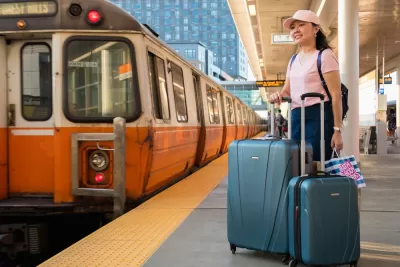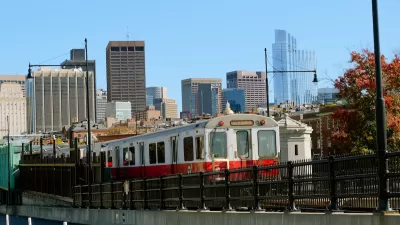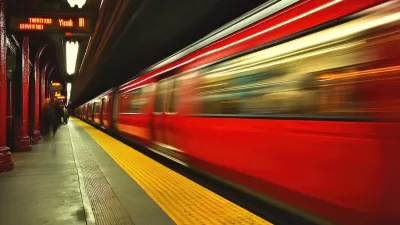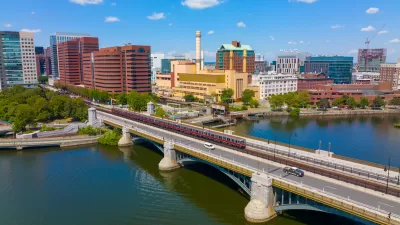A month-long shutdown of one of the region’s busiest lines prompted the city to experiment with temporary bus lanes, reoriented streets, and free bikeshare.

When Boston’s busy Orange Line shut down for a month this summer for long-awaited repairs, commuters braced themselves for massive disruptions. Governing’s Jared Brey spoke with Boston’s chief of streets, Jascha Franklin-Hodge, about the city’s strategies and what they learned.
To give subway riders alternative options, the city responded by “dedicating bus-only lanes, changing the direction of streets or closing them to cars, creating temporary bike lanes, designating queuing areas for shuttles, offering free 30-day passes to its Bluebike bike-share system and many other adjustments.” During the shutdown, Boston’s Bluebikes bikeshare system saw its highest ridership ever.
Franklin-Hodge admitted the line never should have gotten to the point where the shutdown was necessary. “I hope it leads to a real renewed commitment on the part of MBTA leadership to never allow the system to get to a point where we have to shut it down for 30 days.”
Franklin-Hodge also noted that the city should “try more stuff” on a short-term basis to test innovations and understand how they function in the real world. “I think it’s a reminder that we can move quickly, we can try things, we can learn from them, we can adjust them, we can use temporary materials in a lot of cases to refine a design rather than going straight to permanent, and if our goal is supporting transit, and it is, then we have to not lose that speed and that sense of urgency.”
FULL STORY: What Boston Learned About Transit Planning from a Subway Shutdown

Planetizen Federal Action Tracker
A weekly monitor of how Trump’s orders and actions are impacting planners and planning in America.

Congressman Proposes Bill to Rename DC Metro “Trump Train”
The Make Autorail Great Again Act would withhold federal funding to the system until the Washington Metropolitan Area Transit Authority (WMATA), rebrands as the Washington Metropolitan Authority for Greater Access (WMAGA).

DARTSpace Platform Streamlines Dallas TOD Application Process
The Dallas transit agency hopes a shorter permitting timeline will boost transit-oriented development around rail stations.

Car-Centric LA Suburb Looks to a Train-Oriented Future
City leaders in Rancho Cucamonga, the future western terminus of the Brightline West rail line to Las Vegas, want to reimagine the city as a transit-oriented, pedestrian-friendly community.

New Alaska Bitcoin Mine Would Burn as Much Energy as the State’s Largest Coal Plant
Fueled by “stranded” natural gas, the startup hopes to become the largest in the US, and to make Alaska an industry center.

New Jersey Duplexes Elicit Mixed Reactions
Modern, two-unit residences are proliferating in northern New Jersey communities, signaling for some a boon to the housing supply and to others a loss of historic architecture.
Urban Design for Planners 1: Software Tools
This six-course series explores essential urban design concepts using open source software and equips planners with the tools they need to participate fully in the urban design process.
Planning for Universal Design
Learn the tools for implementing Universal Design in planning regulations.
Municipality of Princeton
Roanoke Valley-Alleghany Regional Commission
City of Mt Shasta
City of Camden Redevelopment Agency
City of Astoria
Transportation Research & Education Center (TREC) at Portland State University
US High Speed Rail Association
City of Camden Redevelopment Agency
Municipality of Princeton (NJ)





























